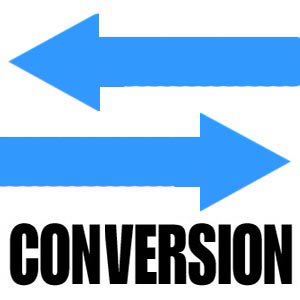Empowering Your Site: How to Track Conversions
 You might have some understanding of how to track conversions and sell users on the phone, but converting your visitors via web forms and online commerce is a different story entirely. When you start to track conversions and streamline your web sales funnel, you’re adding an entirely different dimension to your sales strategy.
You might have some understanding of how to track conversions and sell users on the phone, but converting your visitors via web forms and online commerce is a different story entirely. When you start to track conversions and streamline your web sales funnel, you’re adding an entirely different dimension to your sales strategy.
If you’re considering a website revamp, there’s no better time than the present to analyze your current conversion rates and web conversion strategy. If you don’t have the right tools to track conversions, you definitely need to rectify this and get on the right track before a new or revamped website enters the final build stages.
Streamlining to Track Conversions
One of the biggest obstacles many business owners face with their websites is attracting the user to action. A call to action is an important element of getting the visitor to act. This can include urging the user to act immediately to receive a special offer, inciting the user to fill out a form or contact your company, etc. Most calls-to-action are text, but when paired with a visual element, the user experiences a sense of further urgency.
Visual calls-to-action that may incite users to interact with you or leave their information include things like:
- A quote form
- A “get more information” button
- A download
- A visually appealing link
- A click-to-call or chat
Without some type of conversion or call to action in place, all users have is information about your company with no upfront way to contact you. If your site’s conversion opportunity isn’t front and center, it’s important to monitor your bounce rates and track conversions to see if you could be losing visitors.
Track for Success
When you do change your site – or even if it’s not a consideration yet – the most important thing you can do is let the data you collect make decisions for you. If you need to decide whether or not to incorporate a form on the front page, to change the look of your site or to test one page against another, the data you collect through tracking conversions is key to your success. Without knowing how visitors experience your site, you’ll have no idea how to change your assets to make your site more informative and useful to your visitors.
When you use programs like Google Analytics, you’re tracking visitors, but you’re doing so anonymously. With more advanced data like a user’s parent company, frequency of an individual user’s visits or their particular activity on your site, being able to track conversions with an advanced suite of data tools can vastly improve your business sales strategy.
Next week we’ll talk more about anonymous vs. identified user tracking and how to track conversions of identified users. In the meantime, take a look at Lead Liaison’s visitor tracking tools and track conversions more efficiently than you ever thought possible.


